Discover 11 hidden attractions, cool sights, and unusual things to do in Mombasa (Kenya). Don't miss out on these must-see attractions: Fort Jesus, Haller Park, and Bamburi. Also, be sure to include Nyali Bridge in your itinerary.
Below, you can find the list of the most amazing places you should visit in Mombasa (Mombasa).
Table of Contents
Fort Jesus
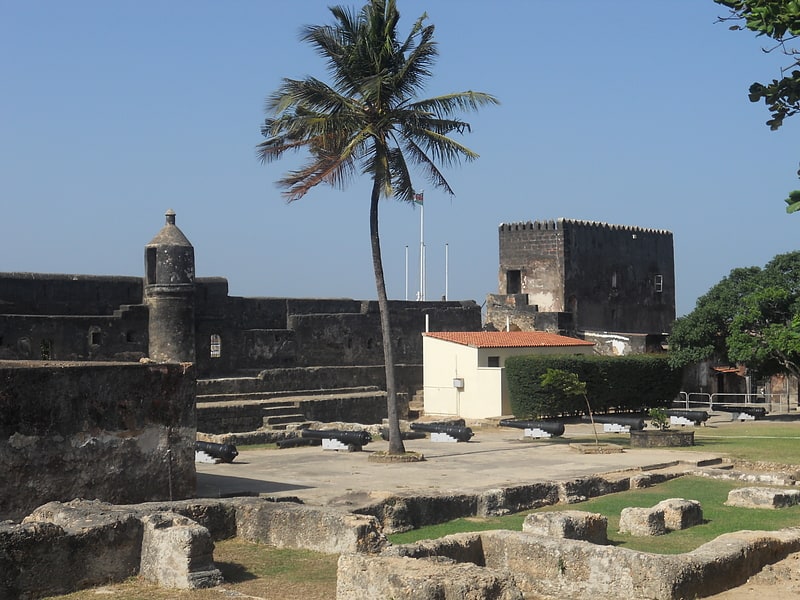
Also known as: Ngome ya Yesu
Fort. Fort Jesus is a fort located on Mombasa Island. Designed by Italian Giovanni Battista Cairati, it was built between 1593 and 1596 by order of King Felipe II of Castille, who also reigned as King Filipe I of Portugal and the Algarves, to guard the Old Port of Mombasa. Fort Jesus was the only fort maintained by the Portuguese on the Swahili coast, and is recognised as a testament to the first successful attempt by a Western power to establish influence over the Indian Ocean trade.
Cairato, the designer of the fort, was inspired by Italian architect Pietro Cataneo, while the master builder was Gaspar Rodrigues. The fort was Cairato's last overseas work. Although the design of Fort Jesus is an example of Renaissance architecture, the masonry techniques, building materials and labour are believed to have been provided by the local Swahili people. The fort was built in the shape of a man (viewed from the air) and is roughly square, with four bulwarks at its corners. The fort is considered a masterpiece of late Renaissance military fortification.
Fort Jesus was captured and recaptured at least nine times between 1631, when the Portuguese lost it to the Sultan Yusuf ibn al-Hasan of Mombasa, and 1895 when it fell under British rule and was converted into a prison. After the Portuguese recaptured it from the Sultan in 1632, they refurbished it and built more fortifications, subsequently making it harder for the fort to fall. The fort was subject to an epic two-year siege from 1696-98 by the Omani Arabs, led by Saif bin Sultan. The capture of the fort marked the end of Portuguese presence on the coast, although they briefly captured and re-occupied it between 1728 and 1729 with the help of the Swahili city-states. The fort fell under local rule from 1741 to 1837, when it was again captured by the Omanis and used as a barracks, before its occupation by the British in 1895, after the establishment of the East Africa Protectorate (which later became, in 1920, the Colony and Protectorate of Kenya).
Fort Jesus was declared a national park in 1958, and in 2011, it was declared a World Heritage Site by UNESCO and highlighted as one of the most outstanding and well-preserved examples of 16th-century Portuguese military fortifications. The fort is Mombasa's most visited tourist attraction.[1]
Address: Ndia Kuu, 00200 Mombasa
Haller Park

Coastal nature park with various animals. Haller Park is a nature park in Bamburi, Mombasa, on the Kenyan coast. It is the transformation of a quarry wasteland into an ecological area. Haller Park holds a variety of plant and animal species which serve as a recreation spot for tourists and locals. Up to March 2007 it held the attraction of Owen and Mzee – the friendship of a hippopotamus and a tortoise.[2]
Address: North Coast of Mombasa along the Mombasa Malindi Road, 80100 Mombasa
Bamburi
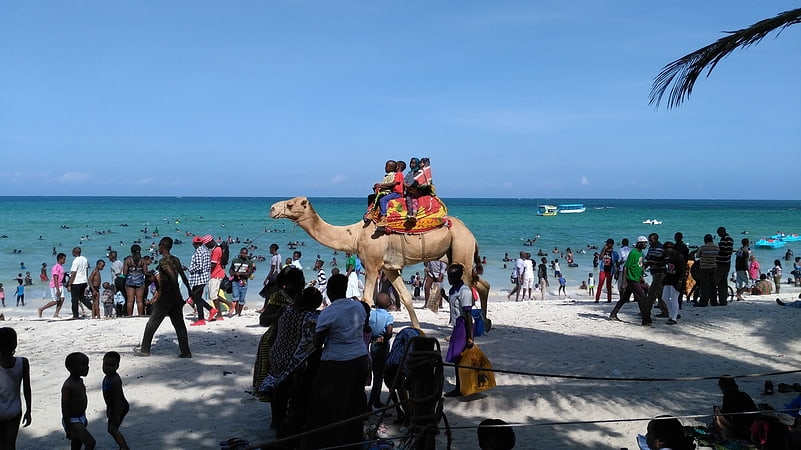
Bamburi, from the local bantu words "Ba" and "Mburi", is a commercial, industrial and local electoral, administrative and a tourist and residential area on the Kenyan north-coast which extends from the coastline on the Indian ocean to the surrounding middle and low-income settlements on the mainland. Administratively, Bamburi is in the Kisauni sub-county of Mombasa and has tourist and beach-front facilities, which include international and local hotels and parks such as Serena International Beach Hotel, Sai Rock Hotel, Kahamas Hotel, Haller Park and Butterfly Pavilion. Bamburi Cement Ltd, a major cement quarry and factory, is also situated in the area and is one of the iconic enterprises. The most popular residential estates within Bamburi include Kiembeni Estate, Nairobi Estate and Bamburi Mwisho. It is a cultural melting pot, with a pulsating night life, especially the area between Front Line and the Bamburi Cement Ltd factory, populated by a line of clubs, sports pubs, eateries and small businesses.[3]
Nyali Bridge
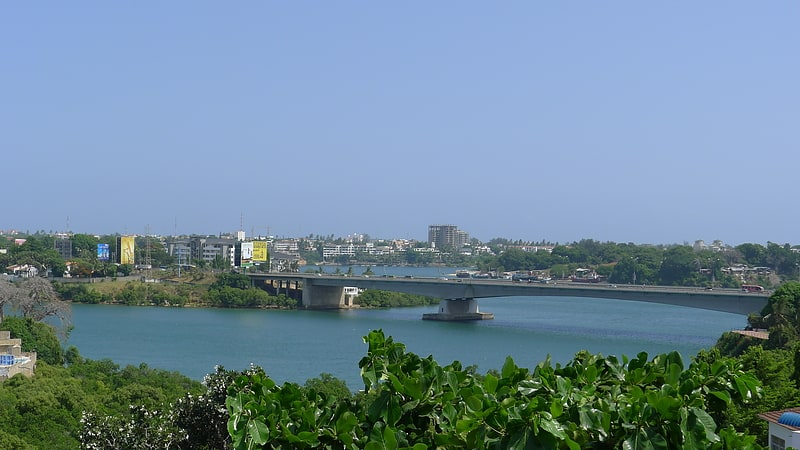
Girder bridge in Mombasa, Kenya. The Nyali Bridge is a concrete girder bridge connecting the city of Mombasa on Mombasa Island to the mainland of Kenya. The bridge crosses Tudor Creek to the north-east of the island. The bridge is one of three road links out of Mombasa. The Likoni Ferry provides a third transport link to the island, and is situated at the southern tip. The mainland approach to the bridge serves as a police checkpoint in both directions.[4]
Holy Ghost Cathedral
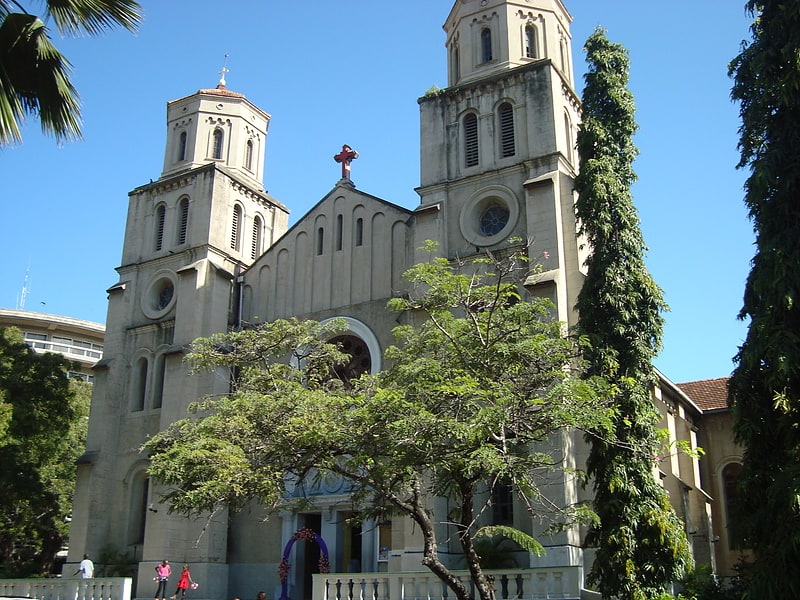
Building in Mombasa, Kenya. The Holy Ghost Cathedral or just Mombasa Cathedral, is the main place of Catholic worship in the city of Mombasa, Kenya, and the seat of the Bishop of the Archdiocese of Mombasa.
The first "Catholic mission" of Mombasa was founded in 1889 by Father Alexander le Roy, a Missionary of the Holy Spirit. The residence and the chapel of the first missionaries was in Ndia Kuu (the ancient city of Mombasa), but in 1895 the living conditions had become unbearable, and it was necessary to build a larger building. In January 1898 he bought five acres in what is known as 'Makadara' area, where today is the cathedral.
On Easter Sunday 1898 the church was completed, but in the early twentieth century, the building was already insufficient to accommodate the number of the faithful increasingly growing. Thus in 1919 plans were made to build a new church in Mombasa and in 1923 the church was completed.[5]
Address: Nyerere Ave, Mombasa
Kilindini Harbour

Also known as: Bandari ya Kilindini
Kilindini Harbour is a large, natural deep-water inlet extending inland from Mombasa, Kenya. It is 25–30 fathoms at its deepest center, although the controlling depth is the outer channel in the port approaches with a dredged depth of 17.5 m. It serves as the harbour for Mombasa, with a hinterland extending to Uganda. Kilindini Harbour is the main part of the Port of Mombasa, the only international seaport in Kenya and the biggest port in east Africa. It is managed by the Kenya Ports Authority. Apart from cargo handling, Mombasa is frequented by cruise ships.
Kilindini is an old Swahili term that means "deep". The port is so-called because the channel is naturally very deep. Kilindini Harbor is an example of a natural geographic phenomenon called a ria, formed millions of years ago when the sea level rose and engulfed a river that was flowing from the mainland.[6]
Mombasa tusks
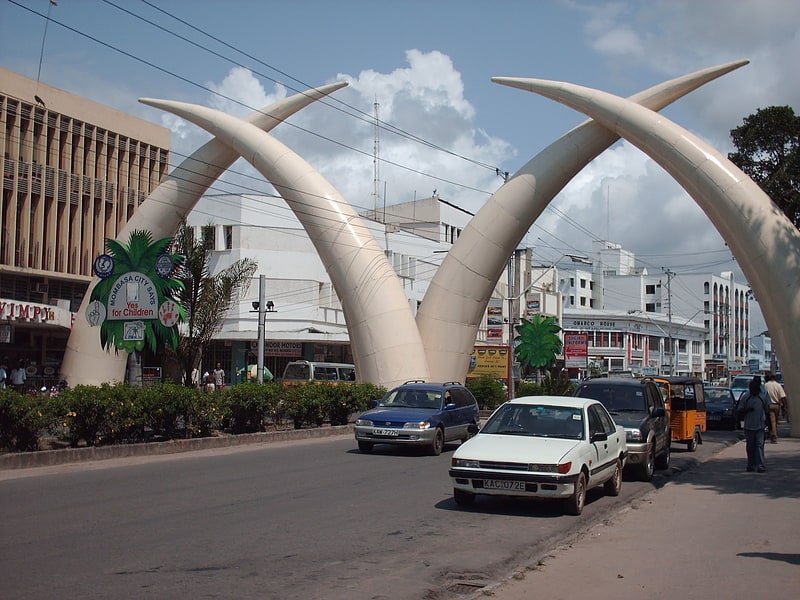
Also known as: Pembe Za Ndovu
The Mombasa tusks, also referred to as Mapemba ya Ndovu or Pembe za Ndovu, form a monument over Moi Avenue, a major thoroughfare in Mombasa, Kenya. Built in the 1950s to commemorate visits by the British royal family, the monument originally comprised two wooden structures resembling tusks; nowadays, there are four aluminium tusks in an M shape. The monument is under the jurisdiction of the National Museums of Kenya in addition to the city's municipal government.[7]
Address: Moi Avenue, Mombasa
Moi Avenue
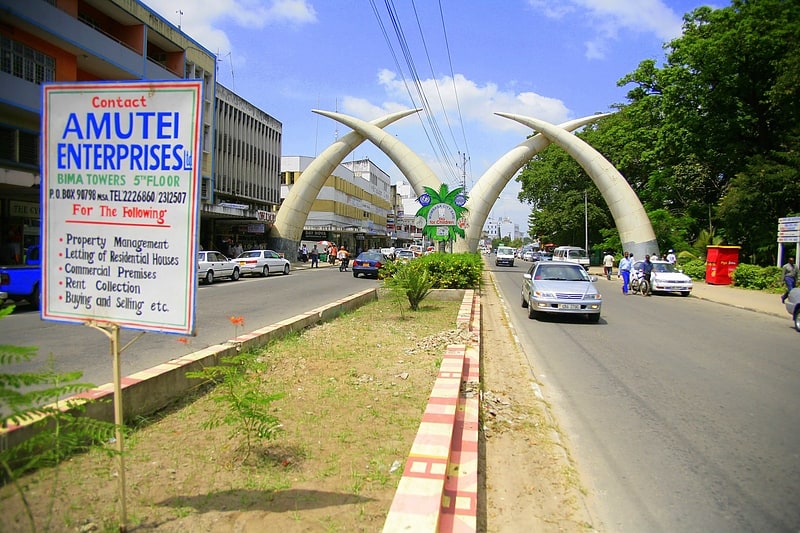
Thoroughfare in Mombasa, Kenya. Moi Avenue is a primary thoroughfare in Mombasa, Kenya. The road runs from west to east from Kilindini to a roundabout with Digo Road. Originally called the Kilindini Road, its name was later changed in recognition of Kenya's second President, Daniel arap Moi. The road consists of two two-lane carriageways, and like Jomo Kenyatta Avenue, a central median of approximately 3 feet in width, along which flowers and shrubs are often planted.
Moi Avenue is known for the Mombasa tusks, two pairs of giant aluminium elephant tusks crossing the dual carriageway. The tusks were commissioned in commemoration of a visit to Mombasa by Queen Elizabeth in 1952 and have remained since that time. Initially the lower part of the tusks were illegally used for advertisement but after the city council enforced strict laws, the landmark has remained in its original form ever since.[8]
New Dwarikadham Temple

Address: Beach Road, Nyali, Mombasa
Nyali
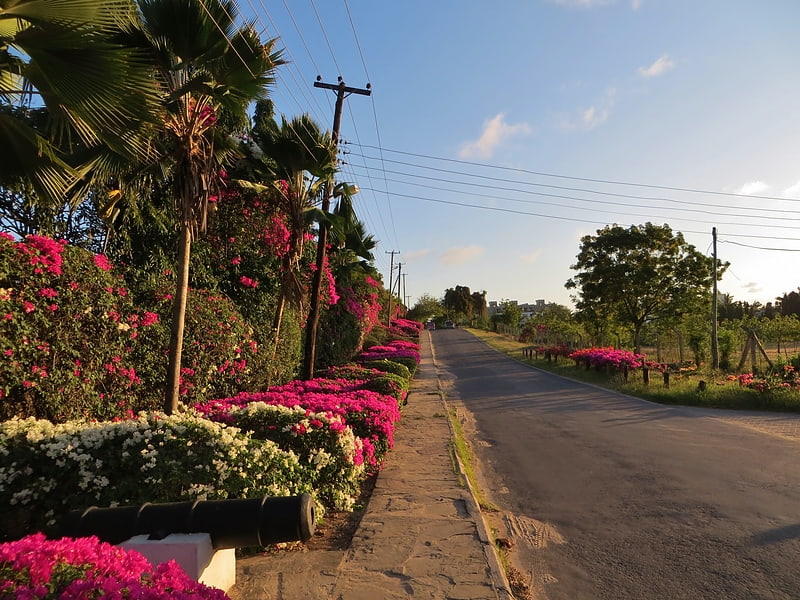
Nyali is a residential area and Sub-County within Mombasa City, located on the mainland north of Mombasa County. It is connected to Mombasa Island by the New Nyali Bridge. Nyali is known for its many high-class hotels and residential houses, modern standards, and long white sand beaches making it a popular destination for both local and foreign tourists.[9]
Tudor
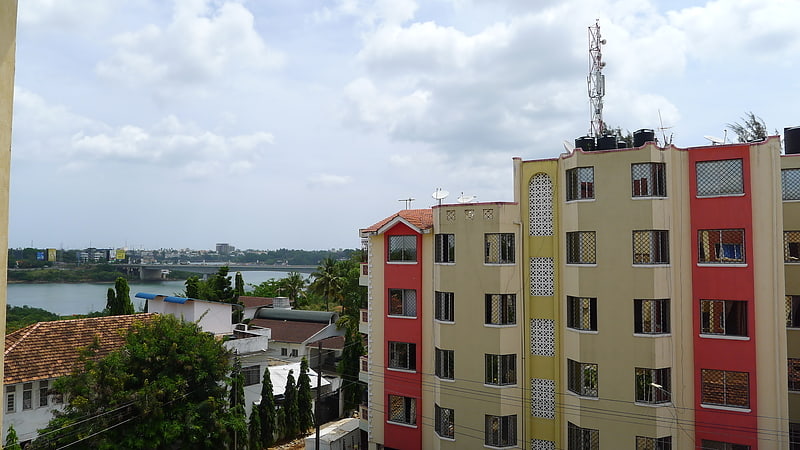
Tudor is a subdivision of Mombasa, Kenya.[10]